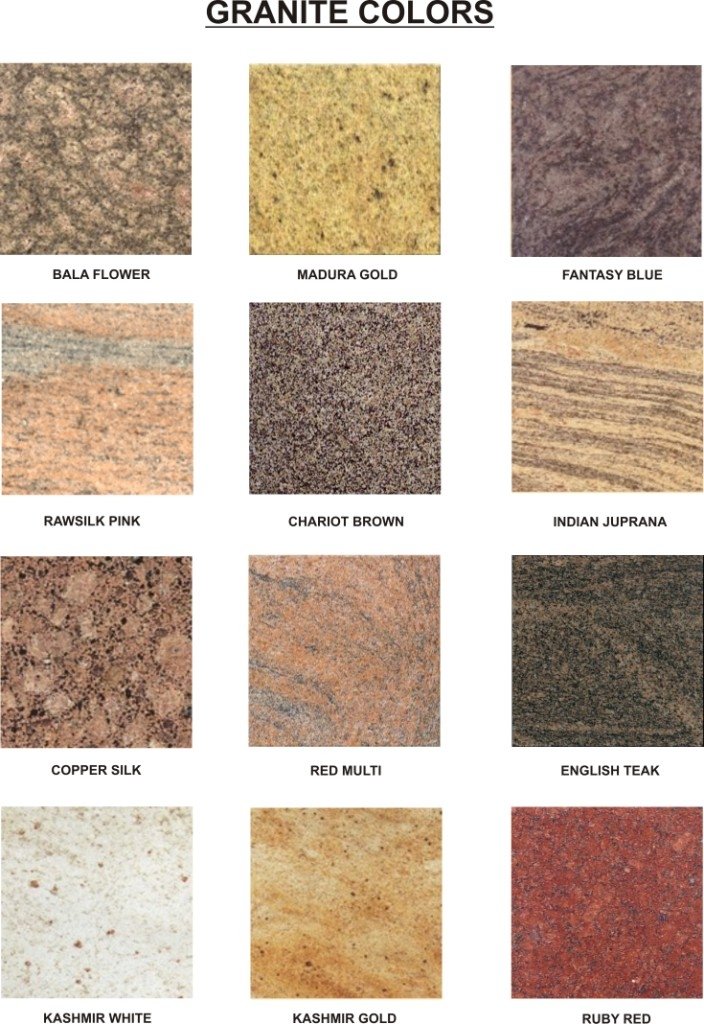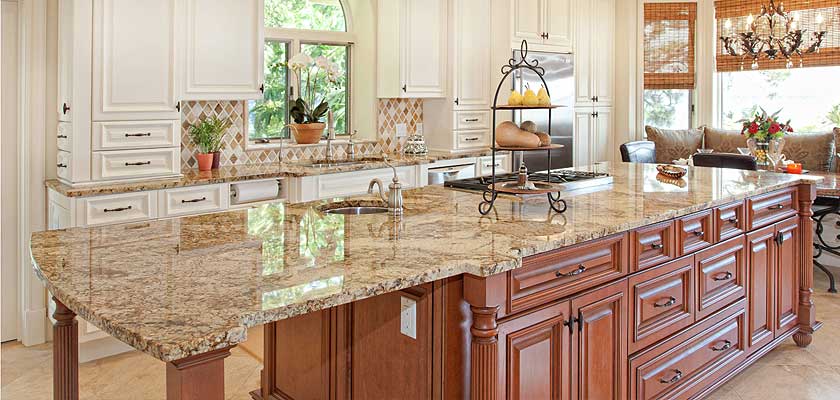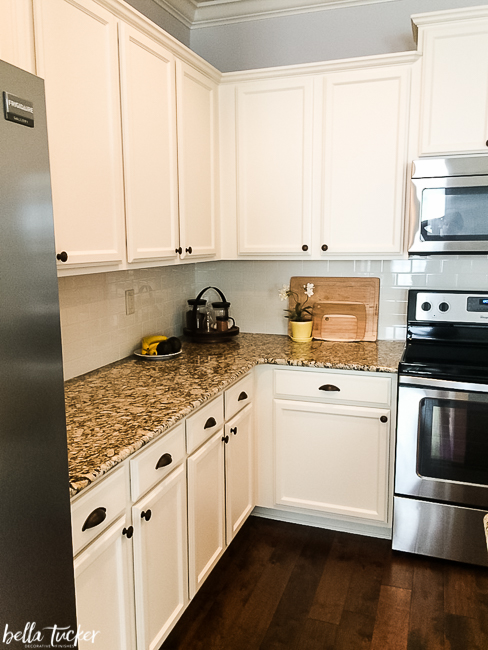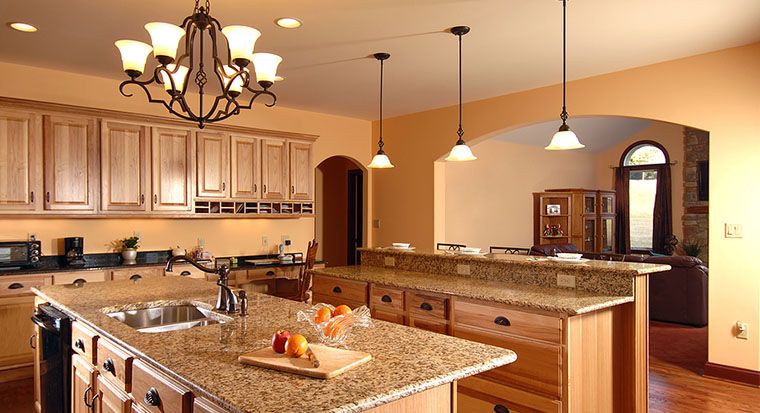Granite Countertop Color Selection
Choosing the right granite countertop color is a crucial decision in designing your kitchen or bathroom. Granite countertops are known for their durability, natural beauty, and variety of colors and patterns, making them a popular choice for homeowners. The right color can enhance the overall aesthetic of your space, complement other design elements, and add value to your home. This comprehensive guide will help you navigate the process of selecting the perfect granite countertop color for your project.
Understanding Granite Colors and Patterns
Granite is a natural stone that comes in a wide range of colors and patterns, formed over millions of years from molten rock beneath the Earth’s surface. The colors and patterns in granite are influenced by the minerals it contains. For instance, feldspar contributes to the red, pink, or cream colors, while biotite and amphibole minerals add black or dark brown tones. Quartz and mica can bring gray, white, or shiny specks to the stone.
Each granite slab is unique, with variations in color, pattern, and veining. Some granite types have a consistent, uniform look, while others display bold, dramatic patterns. Common colors include white, black, gray, green, blue, red, and beige. These colors can be solid, speckled, or veined, and can include a mix of different hues and tones.
When choosing a granite color, it’s essential to consider the lighting in your space. Natural and artificial lighting can affect how the granite color appears. A stone that looks great in a showroom might appear different in your home due to varying light conditions. It’s advisable to bring samples into your home to see how they look at different times of the day and under various lighting conditions.

Granite’s texture also plays a role in its appearance. Polished granite has a glossy finish that enhances the stone’s color and pattern, while honed granite has a matte finish that softens the look. Leathered granite has a textured, slightly glossy finish that adds depth and character to the stone. The choice of finish can influence the overall aesthetic and feel of your countertops.
It’s also important to consider the granite’s movement, which refers to the flow and direction of its patterns and veins. High-movement granite has bold, sweeping patterns that can make a striking statement, while low-movement granite offers a more subdued, uniform look. The level of movement can affect how busy or calm the countertop appears, influencing the overall design of your space.
Lastly, granite’s durability and maintenance requirements are influenced by its color and pattern. Darker granites are typically denser and less porous, making them more resistant to stains and scratches. Lighter granites may require more frequent sealing to maintain their appearance and protect against stains. Understanding these characteristics can help you choose a granite color that not only looks beautiful but also meets your practical needs.

Matching Granite Countertops with Cabinets
The harmony between your granite countertops and cabinets is vital for achieving a cohesive and aesthetically pleasing kitchen design. The color and style of your cabinets should complement your granite countertops rather than clash with them. One approach is to choose contrasting colors that create a striking visual impact. For example, dark granite countertops can pair beautifully with light-colored cabinets, creating a balanced and elegant look.
For a more harmonious and seamless appearance, you can choose granite and cabinet colors that are in the same color family. This approach creates a unified look that can make your kitchen feel larger and more open. For instance, cream or beige granite countertops with cream or light wood cabinets create a warm, inviting space. This monochromatic scheme works well in traditional or transitional kitchens.
The style of your cabinets also influences the best granite color choice. Modern, sleek cabinets often look great with bold, dramatic granite colors and patterns. For instance, black or deep gray granite can enhance the minimalist aesthetic of contemporary cabinets. On the other hand, rustic or traditional cabinets may be better complemented by warm, earthy granite colors like brown, gold, or green, which add to the cozy and classic feel of the space.
Consider the undertones of both the granite and cabinet colors. Undertones can be warm (yellow, red, orange) or cool (blue, green, purple). Pairing warm undertones with warm and cool undertones with cool ensures a cohesive and pleasing look. For example, white cabinets with cool undertones pair well with gray or blue-toned granite, while white cabinets with warm undertones complement beige or brown granite.
The hardware on your cabinets can also play a role in your granite color choice. If you have gold or bronze hardware, warmer granite colors can tie the look together. Conversely, silver or chrome hardware pairs well with cooler granite colors. This detail can help create a polished and integrated design.
And last, consider the overall theme and mood you want to create in your kitchen. If you aim for a bright, airy space, lighter granite colors with reflective properties can enhance the light and openness. For a more dramatic, luxurious feel, darker granites with rich patterns can create a striking centerpiece. Your style and the ambiance you want to achieve should guide your choice of granite color and how it coordinates with your cabinets.

Coordinating Granite Countertops with Backsplashes
The backsplash is another critical element that needs to coordinate well with your granite countertops. The backsplash not only protects your walls but also adds a decorative element that can enhance the beauty of your countertops. One popular approach is to use the same granite for both the countertops and backsplash. This creates a seamless, cohesive look that highlights the natural beauty of the stone.
Alternatively, you can choose a complementary backsplash material that enhances the granite countertops. For example, a simple subway tile in a neutral color can provide a clean, classic backdrop that allows the granite to be the focal point. Subway tiles come in various colors, so you can choose one that picks up a subtle hue in your granite, creating a harmonious look.
For a more bold and dynamic design, consider a contrasting backsplash. If you have light granite countertops, a dark or brightly colored backsplash can add a dramatic flair. Conversely, if you have dark granite, a light or metallic backsplash can create an eye-catching contrast. This approach works well in modern and contemporary kitchens, adding visual interest and depth.
Patterned or textured backsplashes can also complement granite countertops effectively. For instance, a mosaic tile backsplash with colors that echo the tones in your granite can create a beautiful, coordinated look. Textured tiles, like those with a 3D effect or natural stone, can add depth and dimension to your kitchen, enhancing the visual appeal of your countertops.
Another option is to use a solid, high-gloss backsplash to reflect light and add a modern touch. Glass tiles in neutral or bold colors can create a sleek, contemporary look that pairs well with granite countertops. The reflective surface of glass tiles can also make the kitchen appear brighter and more spacious.
Finally, consider the grout color when selecting your backsplash. Grout color can significantly impact the overall look of your backsplash and how it coordinates with your granite countertops. A matching grout color can create a seamless look, while a contrasting grout color can highlight the tile pattern and add definition. Choose a grout color that complements both the backsplash tiles and the granite countertops to achieve a cohesive design.

Considering the Room’s Overall Color Scheme
The overall color scheme of your room plays a significant role in selecting the right granite countertop color. The countertops should complement the existing colors in your kitchen or bathroom, creating a harmonious and balanced look. Start by considering the dominant colors in your space, including the walls, flooring, and major appliances or fixtures.
Neutral colors are a safe and versatile choice for granite countertops, as they can blend seamlessly with a wide range of color schemes. White, beige, gray, and black granite are popular options that can complement both traditional and contemporary designs. Neutral granite colors can also serve as a backdrop for bolder accents and accessories, allowing you to change the look of your space without needing to replace the countertops.
If your room has a warm color scheme, such as shades of red, orange, or yellow, consider granite colors with warm undertones. Earthy hues like brown, gold, and rust can enhance the warmth of the space and create a cozy, inviting atmosphere. These colors work well in rustic, traditional, and transitional designs.
For rooms with a cool color scheme, including shades of blue, green, or purple, opt for granite colors with cool undertones. Gray, blue, and green granites can enhance the cool, calming feel of the space. These colors are ideal for modern, contemporary, and coastal designs, adding a touch of sophistication and serenity.
Consider the intensity of the colors in your room as well. If you have a lot of bold, vibrant colors, a more subdued granite color can provide a balanced, calming effect. Conversely, if your room features mostly neutral or muted colors, a bold, dramatic granite countertop can add a striking focal point and visual interest.
The room’s natural light also affects how granite colors appear. In spaces with abundant natural light, darker granites can look vibrant, while lighter granites can make the room feel airy and spacious. In rooms with limited natural light, lighter granites can help brighten the space and prevent it from feeling too dark or enclosed.
Lastly, think about your long-term preferences and how often you plan to update the room’s decor. Granite countertops are a long-term investment, so choose a color that you will enjoy for many years. If you like to change your decor frequently, a neutral granite color might be the best choice, as it can adapt to different styles and color schemes over time.

Evaluating Granite Samples and Slabs
Evaluating granite samples and slabs is a crucial step in the selection process to ensure you choose the perfect color for your countertops. Start by visiting a showroom or supplier to view a wide range of granite samples. This allows you to see the colors, patterns, and textures in person, giving you a better idea of how they will look in your space.
Take home several samples that you are considering. Place the samples on your existing countertops and observe them under different lighting conditions, both natural and artificial. Pay attention to how the colors change throughout the day and how they interact with other elements in your room, such as cabinets, backsplash, and flooring.
When evaluating granite samples, consider the size of the sample. Small samples may not fully represent the overall look of a granite slab, especially if the granite has bold patterns or large veins. If possible, view larger samples or even full slabs to get a more accurate representation of how the granite will appear once installed.
Examine the details of the granite samples, such as the movement, veining, and color variations. These details can significantly impact the overall look and feel of your countertops. Determine whether you prefer a more consistent, uniform look or a dramatic, high-movement pattern. Understanding your preferences can help narrow down your choices.
Consider the practical aspects of each granite sample. Some colors and patterns may show stains, scratches, or water spots more easily than others. Darker granites, for instance, tend to be more forgiving of stains and scratches, while lighter granites may require more maintenance. Think about how each granite color will fit into your lifestyle and maintenance preferences.
Finally, ask the supplier about the origin and quality of the granite slabs you are considering. Granite from different regions can vary in quality, durability, and appearance. High-quality granite is typically more durable and resistant to stains and scratches. Ensure you choose a reputable supplier who offers high-quality granite and provides detailed information about the slabs.

Common Mistakes to Avoid
When selecting a granite countertop color, avoiding common mistakes can help you make a well-informed decision that enhances your space’s beauty and functionality. One common mistake is choosing a color based solely on trends. While it’s tempting to select a trendy color, trends can change quickly. Opt for a timeless color that you will love for many years, ensuring your investment remains valuable and appealing.
Another mistake is not considering the overall design and color scheme of your space. Granite countertops should complement other elements in your kitchen or bathroom, such as cabinets, backsplash, and flooring. Failing to coordinate these elements can result in a disjointed, unbalanced look. Take a holistic approach to your design, ensuring all components work together harmoniously.
Neglecting to view granite slabs in person is another common error. Small samples may not accurately represent the full slab’s color, pattern, and veining. Viewing and selecting slabs in person allows you to see the true beauty and unique characteristics of each piece, helping you make a more informed decision.
Choosing a granite color without considering lighting conditions can also lead to dissatisfaction. The appearance of granite can change dramatically under different lighting. Ensure you evaluate granite samples in your home under various lighting conditions to see how the color will look in your specific environment.
Failing to consider maintenance requirements is another mistake. Some granite colors and patterns show stains, scratches, and water spots more easily than others. Think about your lifestyle and maintenance preferences when choosing a granite color. Darker granites tend to be more forgiving and require less maintenance, while lighter granites may need more frequent sealing and cleaning.
Finally, overlooking the quality and origin of the granite can result in poor durability and performance. Ensure you choose high-quality granite from a reputable supplier. Ask about the origin, quality, and characteristics of the granite slabs to make sure you select a durable, long-lasting material for your countertops.

What are the most popular granite countertop colors?
Popular granite countertop colors include neutral tones like white, gray, and black, which are versatile and timeless. White granite, such as Alaska White or White Ice, offers a clean, bright look that can make a space feel larger. Gray granite, like Silver Cloud or Steel Gray, provides a modern, sophisticated appearance. Black granite, such as Absolute Black or Black Galaxy, adds a dramatic, elegant touch. Earthy tones like brown, beige, and gold, including Santa Cecilia and Giallo Ornamental, are also popular for their warm, inviting feel.
How do I choose a granite countertop color that complements my cabinets?
To choose a granite countertop color that complements your cabinets, consider the color, style, and undertones of your cabinets. For a striking contrast, pair dark granite with light cabinets or vice versa. For a more harmonious look, select granite and cabinet colors from the same color family. Consider the undertones: match warm undertones with warm and cool undertones with cool. Evaluate the overall style—modern cabinets often pair well with bold, dramatic granite, while traditional cabinets suit warmer, earthy tones. Bring samples home to see how they look together under your lighting.
What should I consider when selecting a granite color for a small kitchen?
For a small kitchen, lighter granite colors can help create a sense of space and openness. White, beige, or light gray granites reflect light and make the room feel brighter and larger. Consider granite with fine, subtle patterns rather than bold, busy designs, which can overwhelm a small space. Ensure the granite color complements the cabinets, backsplash, and flooring to create a cohesive look. Pay attention to the finish—polished granite can enhance light reflection, while honed or leathered finishes add texture without overwhelming the space.
Can I mix different granite colors in my kitchen?
Mixing different granite colors in your kitchen is possible and can create a unique, dynamic look. One approach is to use bold, dramatic granite for the island and a more subdued color for the perimeter countertops. This creates a focal point and adds visual interest. Ensure the colors complement each other and the overall color scheme of the kitchen. Consider the movement and pattern of each granite—balancing a high-movement granite with a more uniform one can prevent the design from becoming too busy. Consulting with a designer can help achieve a harmonious look.
How does lighting affect the appearance of granite countertops?
Lighting significantly affects the appearance of granite countertops. Natural light can enhance the stone’s colors and patterns, making them appear more vibrant. Under artificial lighting, the granite’s appearance can change depending on the type and color of the light. Warm lighting can intensify warm tones in the granite, while cool lighting can highlight cooler tones. The direction and intensity of light can also impact how the granite’s texture and patterns are perceived. It’s essential to view granite samples in your space under different lighting conditions to ensure you are happy with how they look throughout the day.

Related articles:
- Gray Granite Countertops
- Blue Gray Granite Countertops
- Granite Countertops Wood Island
- Backsplash Ideas For Granite Countertops
- Black Granite Countertops In Kitchen
- Affordable Granite Countertops
- Granite Countertop In Kitchen
- Granite Kitchen Island Countertop
- Kitchen Sink With Granite Countertops
- Granite Countertop Green